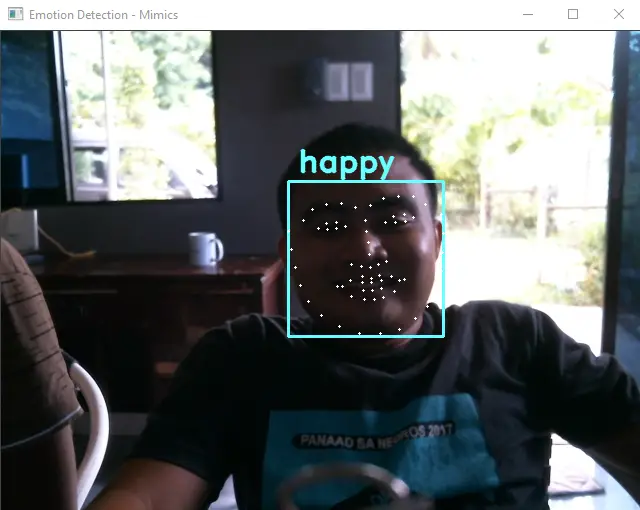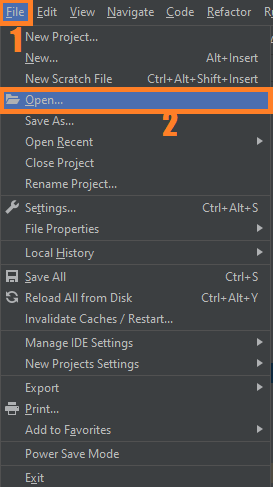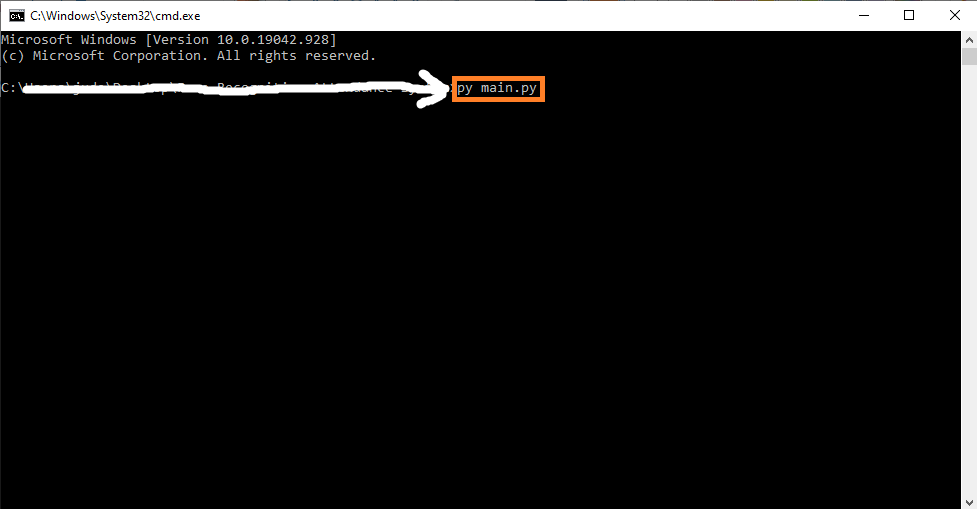Real-Time Emotion Detection OpenCV Python With Source Code
The Real-Time Emotion Detection OpenCV Python was developed using Python OpenCV, Emotion Detection or Facial Expression Classification is a widely researched topic in today’s Deep Learning arena.
To classify your emotions in real-time using just your camera and some lines of code is actually a big step towards Advanced Human-Computer interaction.
An Emotion Detection OpenCV Python Detecting the real-time emotion of the person with a camera input is one of the advanced features in the machine learning process.
The detection of the emotion of a person using a camera is useful for various research and analytics purposes.
The detection of emotion is made by using the machine learning concept. You can use the trained dataset to detect the emotion of the human being.
For detecting the different emotions, first, you need to train those different emotions, or you can use a dataset already available on the internet.
In this article, we will discuss creating a Python program to detect the real-time emotion of a human being using the camera.
This Python OpenCV Project also includes a downloadable Python Project With Source Code for free, just find the downloadable source code below and click to start downloading.
By the way, if you are new to Python programming and don’t know how to use the Python IDE, I have here a list of the Best Python IDE for Windows, Linux, and Mac OS that will suit you. I also have here How to Download and Install the Latest Version of Python on Windows.
To start executing Real-Time Emotion Detection OpenCV Python With Source Code, make sure that you have installed Python 3.9 and PyCharm on your computer.
Real-Time Emotion Detection OpenCV Python With Source Code: Steps on how to run the project
Time needed: 5 minutes
These are the steps on how to run Real-Time Emotion Detection OpenCV Python With Source Code
- Step 1: Download the given source code below.
First, download the given source code below and unzip the source code.

- Step 2: Import the project to your PyCharm IDE.
Next, import the source code you’ve downloaded to your PyCharm IDE.

- Step 3: Run the project.
Lastly, run the project with the command “py main.py”

Installed Libraries
import cv2.cv2 as cv2 import numpy as np
Complete Source Code
import cv2.cv2 as cv2
import numpy as np
from utils.image_classifier import ImageClassifier, NO_FACE_LABEL
# Color RGB Codes & Font
WHITE_COLOR = (255, 255, 255)
GREEN_COLOR = (0, 255, 0)
BLUE_COLOR = (255, 255, 104)
FONT = cv2.QT_FONT_NORMAL
# Frame Width & Height
FRAME_WIDTH = 640
FRAME_HEIGHT = 490
class BoundingBox:
def __init__(self, x, y, w, h):
self.x = x
self.y = y
self.w = w
self.h = h
@property
def origin(self) -> tuple:
return self.x, self.y
@property
def top_right(self) -> int:
return self.x + self.w
@property
def bottom_left(self) -> int:
return self.y + self.h
def draw_face_rectangle(bb: BoundingBox, img, color=BLUE_COLOR):
cv2.rectangle(img, bb.origin, (bb.top_right, bb.bottom_left), color, 2)
def draw_landmark_points(points: np.ndarray, img, color=WHITE_COLOR):
if points is None:
return None
for (x, y) in points:
cv2.circle(img, (x, y), 1, color, -1)
def write_label(x: int, y: int, label: str, img, color=BLUE_COLOR):
if label == NO_FACE_LABEL:
cv2.putText(img, label.upper(), (int(FRAME_WIDTH / 2), int(FRAME_HEIGHT / 2)), FONT, 1, color, 2, cv2.LINE_AA)
cv2.putText(img, label, (x + 10, y - 10), FONT, 1, color, 2, cv2.LINE_AA)
class RealTimeEmotionDetector:
CLAHE = cv2.createCLAHE(clipLimit=2.0, tileGridSize=(8, 8))
vidCapture = None
def __init__(self, classifier_model: ImageClassifier):
self.__init_video_capture(camera_idx=0, frame_w=FRAME_WIDTH, frame_h=FRAME_HEIGHT)
self.classifier = classifier_model
def __init_video_capture(self, camera_idx: int, frame_w: int, frame_h: int):
self.vidCapture = cv2.VideoCapture(camera_idx)
self.vidCapture.set(cv2.CAP_PROP_FRAME_WIDTH, frame_w)
self.vidCapture.set(cv2.CAP_PROP_FRAME_HEIGHT, frame_h)
def read_frame(self) -> np.ndarray:
rect, frame = self.vidCapture.read()
return frame
def transform_img(self, img: np.ndarray) -> np.ndarray:
# load the input image, resize it, and convert it to gray-scale
gray_img = cv2.cvtColor(img, cv2.COLOR_BGR2GRAY) # convert to gray-scale
resized_img = self.CLAHE.apply(gray_img) # resize
return resized_img
def execute(self, wait_key_delay=33, quit_key='q', frame_period_s=0.75):
frame_cnt = 0
predicted_labels = ''
old_txt = None
rectangles = [(0, 0, 0, 0)]
landmark_points_list = [[(0, 0)]]
while cv2.waitKey(delay=wait_key_delay) != ord(quit_key):
frame_cnt += 1
frame = self.read_frame()
if frame_cnt % (frame_period_s * 100) == 0:
frame_cnt = 0
predicted_labels = self.classifier.classify(img=self.transform_img(img=frame))
rectangles = self.classifier.extract_face_rectangle(img=frame)
landmark_points_list = self.classifier.extract_landmark_points(img=frame)
for lbl, rectangle, lm_points in zip(predicted_labels, rectangles, landmark_points_list):
draw_face_rectangle(BoundingBox(*rectangle), frame)
draw_landmark_points(points=lm_points, img=frame)
write_label(rectangle[0], rectangle[1], label=lbl, img=frame)
if old_txt != predicted_labels:
print('[INFO] Predicted Labels:', predicted_labels)
old_txt = predicted_labels
cv2.imshow('Emotion Detection - Mimics', frame)
cv2.destroyAllWindows()
self.vidCapture.release()
def run_real_time_emotion_detector(
classifier_algorithm: str,
predictor_path: str,
dataset_csv: str,
dataset_images_dir: str = None):
from utils.data_land_marker import LandMarker
from utils.image_classifier import ImageClassifier
from os.path import isfile
land_marker = LandMarker(landmark_predictor_path=predictor_path)
if not isfile(dataset_csv): # If data-set not built before.
print('[INFO]', f'Dataset file: "{dataset_csv}" could not found.')
from data_preparer import run_data_preparer
run_data_preparer(land_marker, dataset_images_dir, dataset_csv)
else:
print('[INFO]', f'Dataset file: "{dataset_csv}" found.')
classifier = ImageClassifier(csv_path=dataset_csv, algorithm=classifier_algorithm, land_marker=land_marker)
print('[INFO] Opening camera, press "q" to exit..')
RealTimeEmotionDetector(classifier_model=classifier).execute()
if __name__ == "__main__":
"""The value of the parameters can change depending on the case."""
run_real_time_emotion_detector(
classifier_algorithm='RandomForest', # Alternatively 'SVM'.
predictor_path='utils/shape_predictor_68_face_landmarks.dat',
dataset_csv='data/csv/dataset.csv',
dataset_images_dir='data/raw'
)
print('Successfully terminated.')
Output:

Download the Source Code below
Summary
Detecting the real-time emotion of the person with a camera input is one of the advanced features in the machine learning process.
The detection of the emotion of a person using a camera is useful for various research and analytics purposes.
The detection of emotion is made by using the machine learning concept. You can use the trained dataset to detect the emotion of the human being.
For detecting the different emotions, first, you need to train those different emotions, or you can use a dataset already available on the internet.
In this article, we will discuss creating a Python program to detect the real-time emotion of a human being using the camera.
Related Articles
- Code For Game in Python: Python Game Projects With Source Code
- Best Python Projects With Source Code FREE DOWNLOAD
- How to Make a Point of Sale In Python With Source Code
- Python Code For Food Ordering System | FREE DOWNLOAD
- Inventory Management System Project in Python With Source Code
Inquiries
If you have any questions or suggestions about Real-Time Emotion Detection OpenCV Python With Source Code, please feel free to leave a comment below.





how to import this project??
For the importing you can watch in the you tube on how to import.
which video we can watch?
sir after copy the libraries from the top what you diid in the main function can you tell me that because after running the command prompt its showing first line error.
What is the error
can i have your presentation and report details
So far we don’t have the report or documentation for this project
Where did you take the dataset? Did you make it or did you take it somewhere? Please post the source.